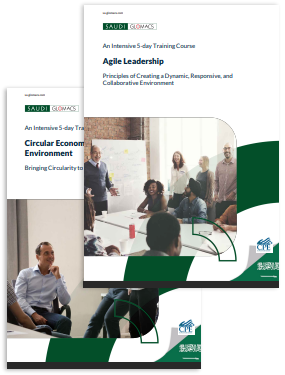An Interactive 10-Day Training Course
Advanced Budgeting and Financial Statement Analysis
Currently the course does not contain content, for more details please feel free to contact us: click here
Modules
This training course is split into two modules:
Module I - Advanced Budgeting & Cost Management
Module II - Advanced Financial Statements Analysis
Each module is structured and can be taken as a stand-alone training course; however, delegates will maximise their benefits by taking Module 1 and 2 back-to-back as a 2-week training course.
Training Outline
Module 1: Advanced Budgeting & Cost Management
DAY 1: Introduction: The Relevance of Budgeting and Cost Management within Strategy Execution
- The Link between Strategy, Planning, Budgeting and Cost Management
- Why Budgeting and Costing are so important to manage your company?
- Financial & Management Accounting
- Preparing Financial Statements & Cost Evaluation
- Understand your Processes: Integrating Financial and Non-financial Aspects
- Identify and Discuss the Key issues in terms of Budget / Costing for your own Organization
DAY 2: The Budgeting Framework and its Role within the Management Process
- The Role & Types of Budgets within Management Accounting
- The Budget Process
- Preparing the Master Budget & Departmental Budgets
- Preparing a Project/CAPEX Budget
- Advantages and Disadvantages of Budgets & the Budget Process: The Critical issues for Success
- Budgetary Control
DAY 3: Cost Management for Budgeting Purposes
- Cost Classification, Concepts and Terminology
- Fixed vs. Variable Costs: The Cost-Volume-Profit Analysis Model
- Contribution Margin Analysis
- Estimating / Forecasting Costs
- Calculating, Evaluating & Managing the Cost of:
- Purchases
- Manufacture
- Inventory (IAS 2)
- Working Capital
- Improving Efficiency to Reduce Costs
DAY 4: Traditional vs. Advanced Techniques in Cost-Control
- Under-costing and Over-costing: The Consequences for Profitability
- How to refine a Costing System?
- Indirect vs. Direct costs: Traditional Cost Allocations Systems vs. Activity-Based Costing
- Cost Drivers: Linking Resources, Activities and Management
- Introducing Activity-Based Budgeting (ABB) and Management (ABM)
DAY 5: Broadening the Performance Measurement Systems
- Shortcomings of Traditional Approaches to Budgeting and Performance Measurement
- Recent Best Practices: the Balanced Scorecard and Six-sigma
- Financial Perspective and Customer Perspective
- Internal Business Process Perspective and Learning & Growth Perspective
- Developing and Adapting the Scorecard
- Elkington’s Triple Bottom Line: Profit, People & Planet
Module 2: Advanced Financial Statements Analysis
DAY 6: Introduction to Advanced Financial Analysis
- Why analyse financial data?
- Who are the users of Financial Information?
- Sources of Financial Information
- Published Annual Reports and Accounts – What is their purpose?
- The Structure and Contents of an Annual Report and Accounts
- Creative Accounting, Financial Scandals, and the Agency Problem
- Corporate Governance, Sustainability, Ethics and Corporate and Social Responsibility (CSR) Reporting
- The Three Main Financial Statements
- Income Statement
- Balance Sheet
- Statement of Cash Flows
DAY 7: Analysing the Annual Report and Accounts
- Using Ratio and Other Analyses of the Annual Report and Accounts to Assess Financial Position and Financial Performance
- Profitability and Cost-Volume-Profit (CVP) Analysis
- Efficiency and Working Capital
- Liquidity and the Short-term Solvency
- Investment and Growth
- Financial Structure and Long-term Solvency
- Ratio Analysis using Excel
- Excel Trend Analysis using Common-size Horizontal Analysis and Vertical Analysis for Comparability
DAY 8: Analytical Tools, Cash vs. Profit and the Cash Forecast
- The Dupont System of Ratio Analysis and Pyramids of Ratios
- Segmental Analysis and Value Added Analysis of the Annual Report and Accounts
- The Fundamental Statistical Tools and Graphical Representations
- Using Statistical Techniques to Analyse and Forecast Financial Data
- The Impact of Alternative Asset Valuation Methods on the Balance Sheet and Profitability
- Cash flow vs. Profit – The Best Measure of Financial Performance
- Working Capital and the Cash Flow Operating Cycle
- Direct and Indirect Cash Flow Analysis and the Cash Flow Forecast
DAY 9: Financing the Business, Capital Investment Project and Business Valuation
- Analysis of the Balance Sheet to Identify Long-term Debt and Equity, and Short-term Financing
- Capital Cost Models: Cost of Equity using Dividend Growth and Capital Asset Pricing Model (CAPM); Cost of Debt
- Weighted Average Cost of Capital (WACC)
- Optimal Capital Structure Models to Minimise WACC
- Future Values, Present Values, and Discounted Cash Flow (DCF)
- Using Net Present Value (NPV), Internal Rate of Return (IRR), Modified Internal Rate of Return (MIRR) and Equivalent Annual Cost (EAC) to Analyse and Evaluate Capital Projects
- The Reasons for Business Valuations
- Business Valuation Models
DAY 10: Analysing and Predicting Corporate Failure, Business and Financial Risk
- Predicting Financial Distress and Corporate Failure – The Altman Z-score Model
- Risk and Uncertainty
- Risk Analysis using Expected Values, Standard Deviation and Coefficient of Variation
- Sensitivity, Simulation, Scenario and Break-even Analysis Techniques
- The Analytical Tools to Manage Risk
- Systematic Risk, Unsystematic Risk, Business Risk and Financial Risk
- Financial Risk– Interest Rate and Foreign Currency Exchange Rate Exposures
- Using Insurance, Hedging and Derivatives to Mitigate and Minimise risk
Certificates
- On successful completion of this training course, GLOMACS Certificate will be awarded to the delegates
- Continuing Professional Education credits (CPE) : In accordance with the standards of the National Registry of CPE Sponsor, one CPE credit is granted per 50 minutes of attendance
Accreditation

GLOMACS is registered with NASBA as a sponsor of Continuing Professional Education (CPE) on the National Registry of CPE Sponsors. NASBA have final authority on the acceptance of individual courses for CPE credit. Complaints regarding registered sponsors may be submitted to the National Registry of CPE Sponsors through its website: www.learningmarket.org.
All Training Seminars delivered by GLOMACS by default are eligible for CPE Credit.


About Saudi Glomacs
At Saudi GLOMACS, we specialize in delivering world-class training courses in Saudi Arabia and across various international locations. Our training courses are tailored to meet the unique demands of Saudi Vision 2030 and the Human Capability Development Program, focusing on empowering Saudi citizens and enhancing workforce skills. We offer diverse courses spanning leadership, management, engineering, and technical disciplines to cultivate expertise and drive professional growth. Our flexible learning options—whether in-person, online, or in-house—ensure accessibility and convenience for individuals and organizations alike.
With over 30+ years of experience through the GLOMACS global network, we are committed to delivering innovative, results-driven training solutions. Our expert instructors combine industry knowledge with dynamic teaching methods, fostering practical skill development and long-term career success. By choosing Saudi GLOMACS, you're investing in personal excellence and contributing to the Kingdom’s sustainable economic growth and vision-driven transformation.
What do you need to learn next?
Check our list of courses or let us customize a course for you.
View courses


